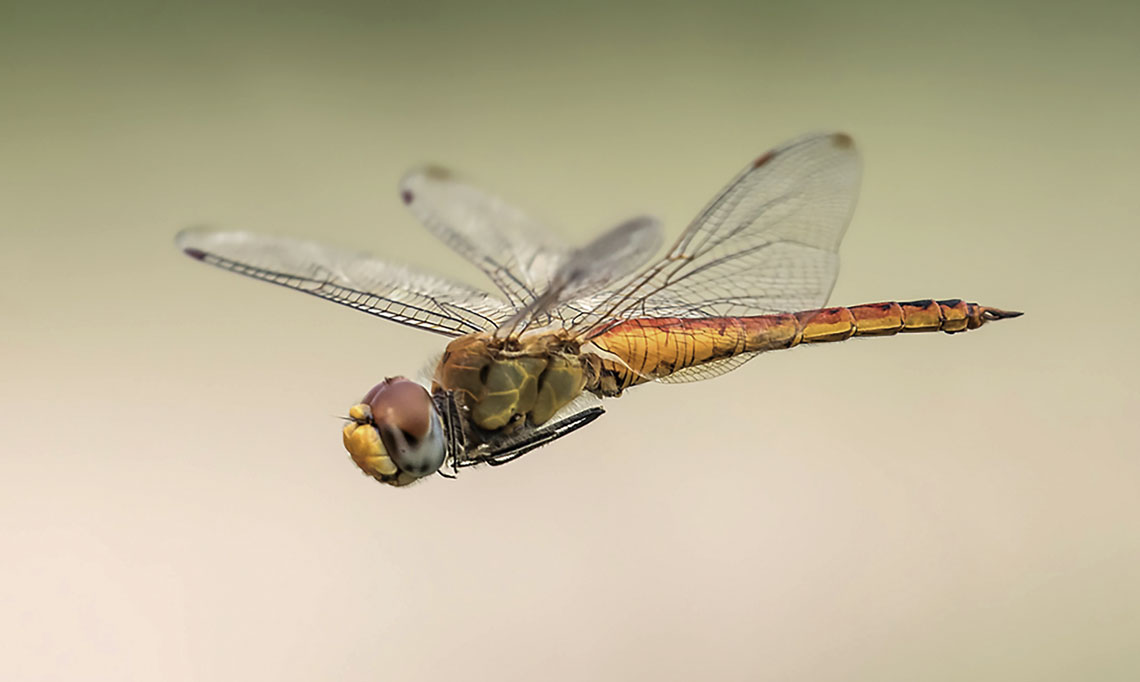
Gregg DarlingThis dragonfly spends less effort flying than smaller insectsGregg Darling
Most insects have wings and fly. But the anatomical changes and mechanisms involved in their winged movements differ depending on the size of the species. Those classified as miniature insects, with wing lengths of between 0.3 and 4 millimeters (mm), have particular adaptations that allow them to overcome the viscosity of the air. This property, which represents the resistance of a fluid (whether liquid or gas) to changes in its shape, does not greatly affect the flight dynamics of larger insects, such as flies, bees, moths, and dragonflies, whose wing lengths range from 5 to 50 mm. But in very small species, like the Encarsia formosa wasp and the Paratuposa placentis flying beetle, it is a considerable obstacle to aerial travel that needs to be overcome. “A miniature insect moves through the air as a bee would move through mineral oil,” says Mao Sun of Beihang University in Beijing, China, author of the study. The aerodynamic adaptations of smaller insects, still rarely studied, include everything from how their wings beat to how they are structured. Some species have porous or bristly wings to facilitate flight (Reviews of Modern Physics, December 12).
Republish